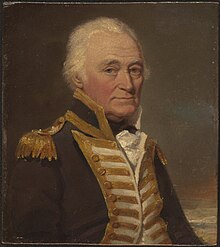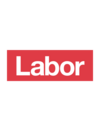Division Of Hunter
Hunter is a largely blue-collar electorate. Hunter's economic base includes agriculture and mining, being dominated by a mix of rural and coal mining communities. The Hunter Region is one of the few remaining Labor-voting regional areas of New South Wales.
The current member since the 2022 federal election, is Dan Repacholi, a member of the Australian Labor Party.
Geography
Since 1984, federal electoral division boundaries in Australia have been determined at redistributions by a redistribution committee appointed by the Australian Electoral Commission. Redistributions occur for the boundaries of divisions in a particular state, and they occur every seven years, or sooner if a state's representation entitlement changes or when divisions of a state are malapportioned.
History

The seat has been in Labor hands since 1910, and for most of that time has been reasonably safe for that party. The Hunter Region has been one of the few areas outside of capital cities where Labor has consistently done well. Among its notable members have been first Prime Minister, Sir Edmund Barton, former Labor Leaders Matthew Charlton and Dr H.V. Evatt, and Joel Fitzgibbon, who was a minister in the first and second Rudd governments.
The seat has been held by two father-son combinations. Rowley James held the seat from 1928 to 1958 before giving it up for Evatt, who was in danger of losing his Sydney-area seat of Barton and wanted a friendlier seat in which to run. Evatt was succeeded after one term by Rowley James' son, Bert, who held it until 1980. Eric Fitzgibbon won the seat in 1984, handing it to his son, Joel, in 1996.
Two-party vote count
Hunter had become somewhat marginal in the 1980s when much of its territory was shifted to the newly created Charlton. Since 1990, Labor has never tallied less than 53 percent of the two-party-preferred vote. Labor's worst two-party-preferred vote was 52.4% in 1984 and best result when challenged by an opposing centre-right candidate was 80.6% in 1961.
Hunter is one of Labor's only regional seats in New South Wales, likely due to it being a blue collar electorate. However, the Nationals and One Nation have increased their support over time due to Labor's policies on coal mining, a large industry in the region. However, the Labor MPs that represent Hunter often come from the Labor Right faction and support the Coalition's policies on coal mining, which more conservative than Labor's.
First-preference vote count
Labor's worst first-preference vote was in 2019, when the current member won only 37.5% of the primary vote; the previous 100-year worst being 44.5% in 2013, again by the incumbent member. Labor's best primary vote was a thumping 76.9% in 1946. As of 2019, the Division of Hunter is considered a marginal seat.
2015 proposed abolition
In 2015 the Australian Electoral Commission announced plans to abolish the federation seat of Hunter. Due to changing populations, overall, New South Wales was to lose a seat while Western Australia was to gain an extra seat. Electors in the north of Hunter were to join New England. The roughly 40 percent remainder were to become part of Paterson, with the Liberal margin calculated to be notionally reduced from 9.8 percent to just 0.5 percent as a result. Since the Commission's guidelines require it to preserve the names of original electorates where possible, the commission proposed renaming Charlton to Hunter. Effectively, this meant that Charlton was abolished, and Hunter pushed slightly eastward to absorb much of Charlton's former territory. Most voters of the new Hunter came from the former Charlton. However, Charlton's Labor incumbent, Pat Conroy, brokered a factional deal to contest neighbouring Shortland in order to allow Fitzgibbon to continue to represent the new Hunter.
Members
Election results
| Party | Candidate | Votes | % | ±% | |
|---|---|---|---|---|---|
| Labor | Dan Repacholi | 41,514 | 38.54 | +0.97 | |
| National | James Thomson | 29,540 | 27.42 | +3.95 | |
| One Nation | Dale McNamara | 10,759 | 9.99 | −11.60 | |
| Greens | Janet Murray | 9,562 | 8.88 | +2.01 | |
| Independent | Stuart Bonds | 6,126 | 5.69 | +5.69 | |
| United Australia | Geoff Passfield | 4,370 | 4.06 | −0.26 | |
| Animal Justice | Victoria Davies | 2,469 | 2.29 | −0.91 | |
| Independent | Scott Laruffa | 1,929 | 1.79 | +1.79 | |
| Informed Medical Options | Cathy Townsend | 1,458 | 1.35 | +1.35 | |
| Total formal votes | 107,727 | 92.37 | +1.34 | ||
| Informal votes | 8,901 | 7.63 | −1.34 | ||
| Turnout | 116,628 | 90.85 | −1.44 | ||
| Two-party-preferred result | |||||
| Labor | Dan Repacholi | 58,200 | 54.03 | +1.05 | |
| National | James Thomson | 49,527 | 45.97 | −1.05 | |
| Labor hold | Swing | +1.05 | |||

 indicates at what stage the winning candidate had over 50% of the votes and was declared the winner.
indicates at what stage the winning candidate had over 50% of the votes and was declared the winner.Graphs are unavailable due to technical issues. Updates on reimplementing the Graph extension, which will be known as the Chart extension, can be found on Phabricator and on MediaWiki.org. |
References
- ^ "Hunter (Key Seat) - Federal Electorate, Candidates, Results". ABC News. Retrieved 27 May 2022.
- ^ Muller, Damon (14 November 2017). "The process of federal redistributions: a quick guide". Parliament of Australia. Retrieved 19 April 2022.
- ^ "Australian Electoral Commission to abolish Federal NSW seat of Hunter". ABC News. Australia. 16 October 2015.
- ^ "Draft federal redistribution of New South Wales". Poll Bludger, Crikey. 16 October 2015.
- ^ "Labor's Joel Fitzgibbon loses his seat in redistribution by Australian Electoral Commission". The Age. 16 October 2015.
- ^ Muller, Damon (14 November 2017). "The process of federal redistributions: a quick guide". Parliament of Australia. Retrieved 6 January 2021.
- ^ Green, Antony. "Hunter". ABC Election Guide 2016. Australian Broadcasting Corporation.
- ^ "NSW federal redistribution 2015". ABC News. Australia.
- ^ Hunter, NSW, 2022 Tally Room, Australian Electoral Commission.








